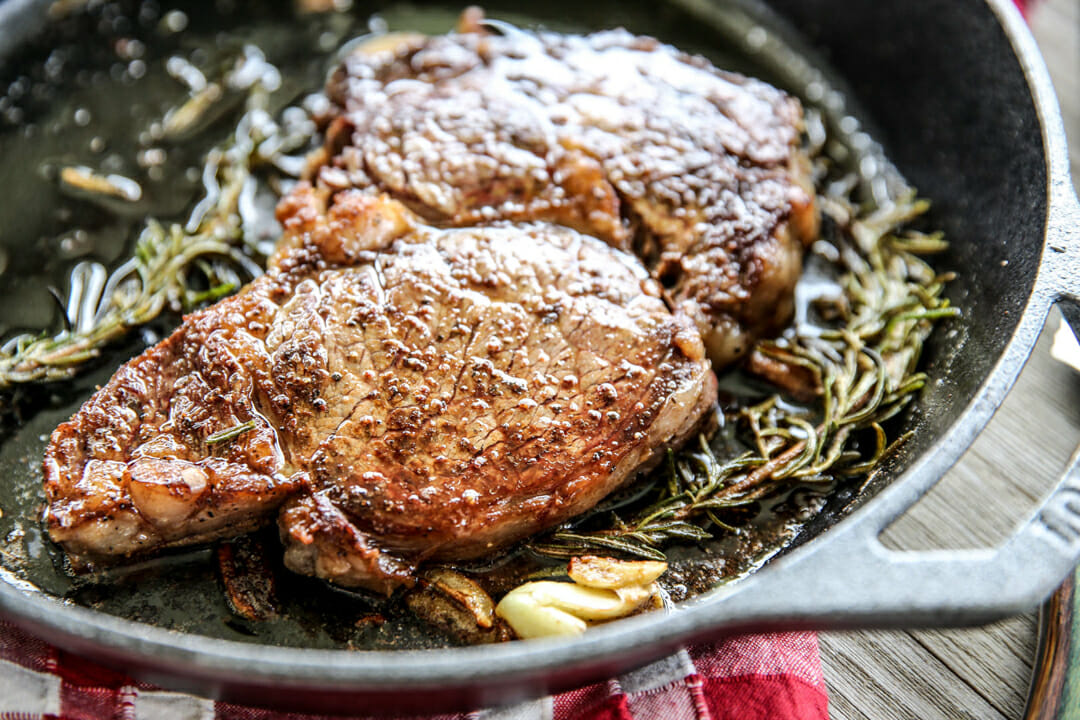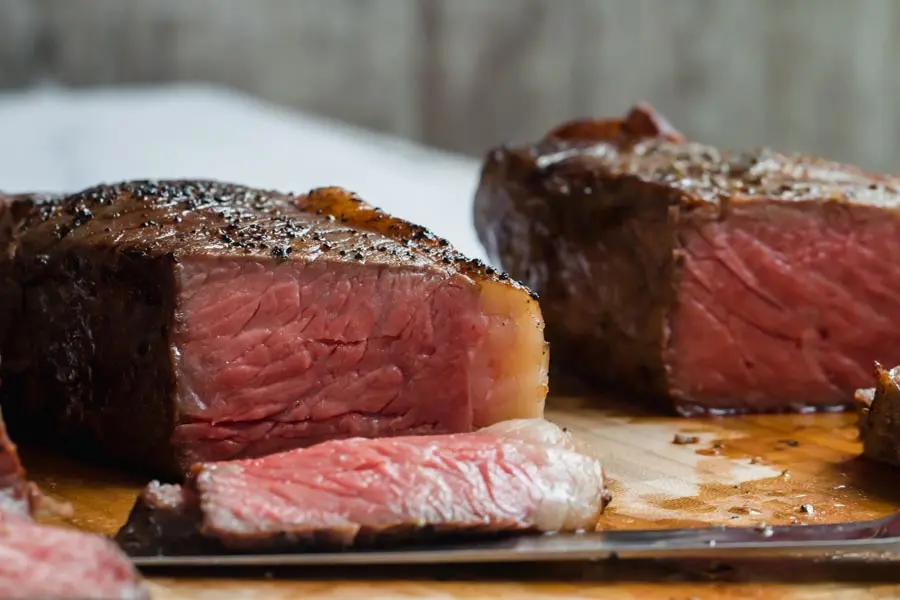The Ultimate Guide on How to Cook a Tender Steak Like a Pro
Written By James Morgan
Cooking the perfect steak is an art that many aspire to master, and achieving that golden standard often boils down to knowing how to cook a tender steak. Whether you prefer your steak rare, medium, or well-done, the foundation of a delicious meal lies in the quality of the meat and the techniques used to prepare it. In this in-depth article, we will explore every aspect of cooking a tender steak, from choosing the right cut to mastering the cooking process and everything in between. By the end of this guide, you'll be equipped with the knowledge needed to impress your friends and family with perfectly cooked, tender steaks.
:max_bytes(150000):strip_icc()/GettyImages-Arijuhani_950332546-d1f78fa10aac4e0dbe8575ffe8036896.jpg)
Choosing the Right Cut for Your Tender Steak
The journey to a tender steak begins long before it hits the grill or pan. Selecting the right cut of meat is crucial for achieving that melt-in-your-mouth texture. Steak cuts vary greatly in fiber composition, fat content, and tenderness. Some of the most popular cuts for tender steaks include:
- Tenderloin: Known for its remarkable tenderness, the tenderloin is often considered the king of steak cuts. It is lean, flavorful, and can be enjoyed as a filet mignon.
- Rack of Lamb: Another incredibly tender option, lamb steaks from the rack of lamb are flavorful and a treat for the taste buds.
- Ribeye: This cut is fatty and has a rich marbling which adds flavor and tenderness, making it a favorite among steak lovers.
- New York Strip: A well-balanced cut with good flavor and tenderness, it's a great choice for those who appreciate a hearty steak.
Once you have decided on the type of steak to cook, consider the marbling. A steak with good marbling will have streaks of fat running through the meat. This fat not only provides flavor as it melts during cooking but also contributes to tenderness.

Preparing Your Steak for Cooking
Your cooking process begins with proper preparation. Here are essential steps to ensure your steak is ready for the grill or pan:
- Let it reach room temperature: It's vital to allow your steak to sit at room temperature for at least 30 minutes before cooking. This ensures even cooking, preventing parts of the steak from being overcooked while others remain undercooked.
- Season generously: The beauty of a steak lies in its inherent flavors. A generous seasoning of salt and pepper enhances these flavors without overpowering them. Consider using other spices, such as garlic powder, onion powder, and paprika, but keep it simple.
- Marinating (Optional): While not always necessary, marinating your steak can introduce new flavors and help tenderize the meat even further. Common marinade ingredients include olive oil, vinegar, soy sauce, and various herbs and spices. A marinade can also help to keep the steak moist during cooking.

Tools You'll Need for Cooking Your Tender Steak
To cook a tender steak to perfection, it's important to have the right tools. Here is a list of essential cookware you'll need:
- Griddler: Great for achieving that perfect sear without going outside, a griddler allows for even cooking and provides the option to adjust temperature settings easily.
- Knife: A sharp knife is crucial for slicing through meat with ease. A quality chef's knife will allow you to cut the steak into uniform slices, enhancing presentation.
- Cutting Board: A sturdy cutting board is essential for preparing, marinating, and slicing your steak. Opt for one made of wood or plastic, as they are gentle on knife blades and easier to clean.

The Cooking Process: Mastering Techniques
There are various techniques to consider when cooking your steak, and each offers unique advantages. Here, we delve into the most popular methods:
Grilling
Grilling is perhaps the most iconic method of cooking steak. To achieve the perfect grill marks and flavor, follow these steps:
- Preheat your grill to high heat.
- Brush the grill grates with oil to prevent sticking.
- Place the steak on the grill and close the lid. For medium-rare, cook for about 4-5 minutes per side, flipping only once.
- Use a meat thermometer to check the doneness. Aim for 135F for medium-rare, 145F for medium, and 160F for well-done.
Grilling is a fantastic way to infuse a smoky flavor into your tender steak, and its perfect for those summer barbecues with friends and family.
Pan-Searing
If you can't grill indoors, pan-searing is an excellent alternative. Here's how:
- Heat a cast-iron skillet over medium-high heat. Add a tablespoon of oil and let it heat until shimmering.
- Place the steak in the skillet and let it sear without moving it for 4-5 minutes.
- Use tongs to flip the steak and sear the other side for an additional 4-5 minutes.
- For the last minute, you can add butter, garlic, and herbs like thyme to enhance the flavors.
Pan-searing provides a lovely crust and allows for precise temperature control.
Oven Cooking
For those who favor a hands-off approach, oven cooking can be a great method. Here's how to execute it perfectly:
- Preheat your oven to 400F.
- Sear the steak on both sides in an oven-safe skillet on the stovetop until browned, then transfer the skillet to the oven.
- Cook in the oven until the internal temperature reaches your desired level of doneness.
This method ensures thorough cooking while maximizing tenderness. The key is to use a probe thermometer to check the internal temperature accurately.
Resting Your Steak: The Key to Tenderness
After cooking your steak, you might be tempted to dig in right away, but patience is a virtue here. Resting your steak for at least 5-10 minutes is essential as it allows the juices to redistribute throughout the meat. If you skip this step, coupled with the hot skillet or grill, those delightful juices will spill out, leading to a drier steak. Cover the steak loosely with aluminum foil while it rests to retain warmth.
Slicing Your Steak to Perfection
Knowing how to cut your steak correctly is just as important as how you cook it. Always slice against the grain, which means cutting perpendicular to the direction of the muscle fibers. This will create tender, bite-sized pieces and ensure a more enjoyable eating experience. Use a sharp knife to achieve clean cuts with less tearing of the meat.
Cleaning Your Cookware
Proper cleaning after cooking is vital for maintaining the longevity of your cookware and ensuring safety. Here are a few tips for cleaning your cookware:
- Griddler Care: After it cools down, wipe down with a damp cloth. Use a cookware cleaner designed for your type of surface for tougher stains.
- Cutting Board Maintenance: Scrub your cutting board with hot, soapy water after each use, and apply a bit of cutting board oil monthly to maintain its integrity.
Your Next Steps
Now that you have an understanding of how to cook a tender steak, its time to put your knowledge to the test. Invite friends over for a cookout, experiment with different cuts and methods, and refine your skills. Dont be afraid to get creative with flavors try different marinades or seasoning blends to enhance your steak even further. Achievement comes with practice, and soon you'll confidently present a juicy, flavorful steak every time.
As an Amazon Associate, I earn from qualifying purchases.



